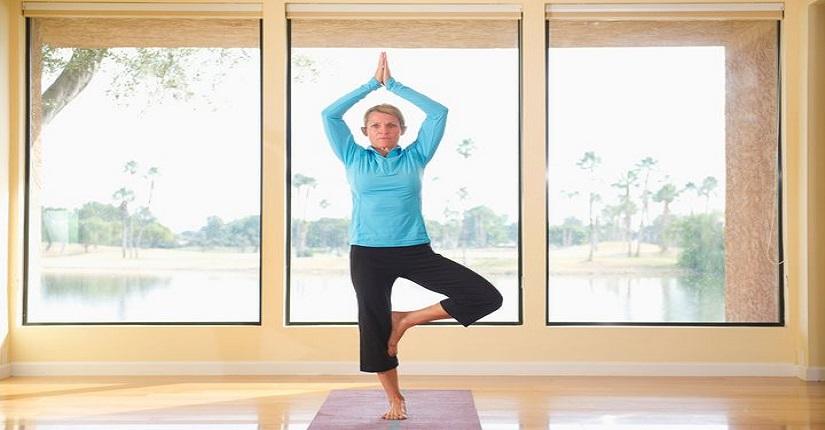
Anusara Yoga is a style of yoga that was founded by American yogi John Friend in 1997. It is a modern form of Hatha yoga that focuses on alignment principles, heart-centered philosophy, and a joyful approach to practicing yoga. The term “Anusara” comes from the Sanskrit language and can be translated as “flowing with grace” or “following your heart.
Anusara Yoga is known for its emphasis on “Universal Principles of Alignment,” which provide a framework for safe and effective yoga postures. These principles help students to align their bodies properly, prevent injuries, and open themselves to the flow of energy. The philosophy of Anusara Yoga encourages practitioners to see the good in everything and everyone, promoting a positive and compassionate outlook.
In an Anusara Yoga class, you can expect a combination of physical postures (asanas), breathwork (pranayama), and meditation. Classes often incorporate heart-opening poses, creative sequencing, and a sense of community and celebration. Students are encouraged to express themselves through their practice, honoring their unique abilities and limitations.
How to do Anusara Yoga
Practicing Anusara Yoga involves a combination of physical postures (asanas), breathwork (pranayama), meditation, and alignment principles. Here’s a general guide on how to do Anusara Yoga:
Find a Certified Anusara Yoga Teacher: Anusara Yoga is a specialized form of yoga, and it’s best to learn from a certified Anusara Yoga teacher who can guide you through the practice, provide alignment cues, and ensure you practice safely.
Start with Warm-up: Begin your practice with a gentle warm-up to prepare your body for more challenging poses. Warm-up exercises may include gentle stretches, joint movements, and simple breathwork.
Focus on Alignment: Anusara Yoga places great emphasis on proper alignment. Listen to the alignment cues provided by your teacher and pay attention to the positioning of your body in each pose. This will help you prevent injuries and experience the full benefits of the postures.
Practice Asanas: Anusara Yoga includes a wide range of yoga postures, such as standing poses, forward bends, backbends, twists, and inversions. Your teacher will guide you through a sequence of poses designed to create balance and harmony in your body.
Engage in Breathwork: Pranayama, or breathwork, is an integral part of Anusara Yoga. Practice conscious breathing techniques to link your breath with your movements, promoting a deeper connection between body and mind.
Cultivate a Heart-Centered Approach: Anusara Yoga encourages practitioners to approach their practice with an open heart and a positive attitude. Embrace the philosophy of “opening to grace,” which means seeing the good in yourself and others.
Practice Meditation: Incorporate moments of meditation or mindfulness into your practice. This can involve focusing on your breath, repeating a mantra, or simply observing your thoughts without judgment.
Respect Your Body: Listen to your body and respect its limitations. Anusara Yoga encourages practitioners to honor their individual abilities and to modify poses as needed. Avoid pushing yourself into positions that cause pain or discomfort.
End with Savasana: Finish your Anusara Yoga practice with Savasana, a relaxation pose. Lie down on your back, close your eyes, and allow your body to rest and integrate the benefits of your practice.
Stay Connected to the Anusara Community: Anusara Yoga has a strong sense of community and support. Consider attending workshops, retreats, or classes to connect with other practitioners and deepen your understanding of the practice.
Benifits of Anusara Yoga
Anusara Yoga offers a wide range of benefits for practitioners, both physically and emotionally. Some of the key benefits of practicing Anusara Yoga include:
Improved flexibility and strength: Anusara Yoga includes a variety of physical postures and sequences that help enhance flexibility, balance, and strength throughout the body. Regular practice can lead to increased overall physical fitness.
Enhanced alignment and body awareness: The emphasis on alignment principles in Anusara Yoga helps students develop a deeper understanding of their bodies, leading to improved posture and reduced risk of injury.
Stress relief and relaxation: Like many other forms of yoga, Anusara Yoga incorporates breathwork and meditation, which can help reduce stress and promote relaxation.
Heart-opening and emotional well-being: Anusara Yoga encourages practitioners to cultivate a positive outlook and open-heartedness, fostering emotional well-being and a sense of connection with others.
Increased body-mind connection: The combination of physical postures, breathwork, and philosophical principles in Anusara Yoga helps strengthen the connection between the body and mind.
Improved focus and concentration: Regular practice of Anusara Yoga can enhance mental focus and concentration, allowing practitioners to be more present in their daily lives.
Better balance and coordination: Anusara Yoga often includes balancing poses, which can improve coordination and stability.
Enhanced self-awareness: Anusara Yoga’s heart-centered philosophy encourages self-reflection and self-awareness, promoting personal growth and self-discovery.
Community and support: Anusara Yoga fosters a sense of community and support among practitioners, creating a positive and inclusive environment for all levels of students.
Healing and therapeutic benefits: Some students find that Anusara Yoga can be therapeutic, helping them cope with physical injuries, chronic conditions, or emotional challenges.
© Indian Yoga Expert 2026 | All Rights Reserved
© Indian Yoga Expert 2026 | All Rights Reserved